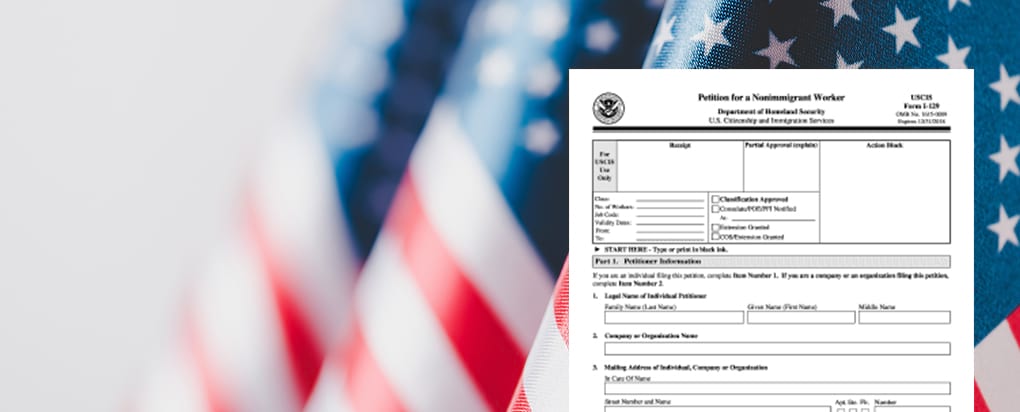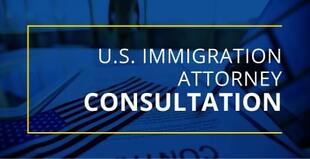
I-129 Petition for
Nonimmigrant Work Visas
Knowing which visa is the best to allow someone to work in the U.S. can be confusing There are several different types of visa for foreign nationals to work in the U.S. Each of them has different requirements and effects. If you want to obtain a visa to work in the U.S., you should consult with an experienced Immigration Attorney.
Ask yourself whether you want an immigrant visa or a non-immigrant visa. An immigrant visa opens the door to obtaining a Green Card which allows the beneficiary to maintain legal residency. A nonimmigrant visa will permit the beneficiary to work in the U.S. for only a period of time, depending upon the specific nonimmigrant visa requested. Obtaining a non-immigrant working visa will not automatically bring you the Green Card, but can give you the chance to work in the U.S. so that you may find a way to seek permanent residence at a later date.
If you want to get a nonimmigrant working visa, you will need to file a Form I-129 with the USCIS.
What is Form I-129?
I-129 is used to obtain a nonimmigrant visa to work in the U.S. It may be used to apply a for a variety of nonimmigrant visas including, but not limited to, certain E visas, H visas, and L visas. This article will focus only on the general part of Form I-129 and cover some popular options.
Requirements

Because the I-129 is used to apply for a work visa, thus there must be an employment relationship to support the application.
The employer is considered to be the “petitioner.”
The employee – the person who will hold the visa – is the “beneficiary.”
This also applies to investors who want to open a new business in the U.S. For example, if you want to obtain an E-2 visa, your new U.S. company will be the employer-petitioner, and you will be hired by your new company as the employee-beneficiary.
Filing
There are two major parts of Form I-129: the general personal information and additional, more specific supplements for different types of visas.
In the first part, you just need to provide basic information regarding the employer-petitioner, the employee-beneficiary, the proposed employment, the type of visa and service you requested, and some other information. This information is required for all applicants using Form I-129. No one should skip this part.
E-2 visa requirements

Not all E-2 petitioners need to file an I-129. Form I-129 is required only if the investor is an E-2 CNMI investor or the beneficiary is already in the U.S. legally. E-2 CNMI investments are specifically limited to foreign investors who have previously been granted a qualifying long-term investor status under the laws of the CNMI, which do not apply in most current cases. The second situation appears more frequently.
To apply for an E-2 visa for an employee-beneficiary who is already in the U.S., the employer-petitioner must prove his or her possession and control of capital and the ability to develop and direct the new business.
 |
The capital must be placed at risk and irrevocably committed to the new business. |
 |
The new business must be a real, active, and operating commercial or entrepreneurial undertaking that produces services or goods for profit. |
 |
The investment must be substantial and the funds must come from legal sources. |
 |
The business should be able to sustain continuing operation. |
An employee of the same nationality as the E-2 employer may also be classified as E-2. The employee must principally and primarily perform executive or supervisory duties or possess special qualifications that are essential to the successful and efficient operation of the enterprise.
L-1 visa application
To apply for an L-1 visa, the employer-petitioner must prove that
 |
there is a qualifying relationship between the foreign employer and the U.S. employer. | |
 |
the employee-beneficiary had worked for the foreign employer for more than one year in a managerial, executive, or specialized knowledge capacity. | |
 |
the employee-beneficiary has received a bona fide offer of employment in the same type of capacity by the U.S. employer. | |
If the employee-beneficiary is coming to open or work in a new office in the U.S., some additional evidence is required. The employer must show
 |
adequate physical premises for the new office. |
 |
the financial ability to support the new office and to compensate the employee-beneficiary. |
The specific evidence requirements are different for L-1A and L-1B. Please consult yimmigration attorney for details.
H-1B visa application process

An H-1B applicant needs to provide more information regarding the employer, the employee, the offered position, and which CAP are you filing.
If you are transferring from your valid F-1 status, you may also want to get a cap-gap extension to cover the gap between the day your OPT expires and the day your H-1B is granted.
Please consult your Immigration Attorney for important details about Form I-129 and your visa application to ensure that all forms and documents are included and are complete and accurate. Good luck with your application!
Disclaimer: The article contains general information and does not include legal advice on a particular case.











